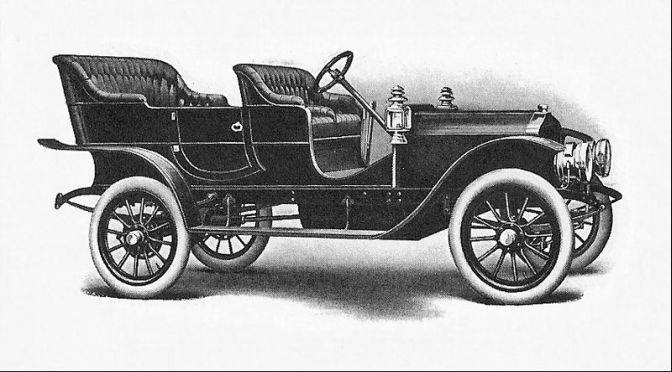This post was first published on June 20th, 2014.
The name that is most often associated with Automobile patents is Henry Ford, in addition to Alexander Winton, Karl Benz, and others. Supposedly, Ford’s first experience with the patent system was not as an “Inventor” but as an “Infringer”, who allegedly infringed a US patent titled “Road Engine” granted to Selden (Patent No. 549160) in 1895. Selden’s patent, with a three-page description, five drawings, and 6 claims, controlled the entire US automobile industry for a considerable period of time.
George B Selden, a Patent Attorney from Rochester, was interested in constructing a horseless carriage that is a lightweight, self-propelled and a one-man operable locomotive. There were massive engines that existed during the time, which were ill-adapted to the purpose. During his visit to Philadelphia Centennial Exposition in 1876, he came across an Internal Combustion Engine invented by Brayton. However, Brayton’s engine had low power and weighed over half a tonne. Selden planned a number of improvements to the Brayton engine and filed a patent application on May 8, 1879. From the specification and claims of Selden’s patent application (No. 549,160), which provides alternatives to some features and aims to obtain broader protection scope, it may be inferred that he was more a clever patent attorney than an inventor.
Using his professional knowledge of the rules and regulations of the patent office, Selden had his patent issued after 16.5 years from the date of filing of the patent. Back then, a patent once granted, would remain in force for 17 years only. Further, the regulations that were in existence then would allow an applicant to respond to an official action from the patent office within two years as opposed to the 3 or 6 month period (with extensions) given currently. Allegedly, Selden took around 726 days to submit a new oath to the Patent Office.
Upon coming across Selden’s patent, Electric Vehicle Company (EVC), an enterprise headquartered in Connecticut, approached Selden and obtained an exclusive license from him for his patent. The company agreed to pay $15 per vehicle manufactured or a minimum of $5000 a year. Soon after acquiring the license, EVC started sending infringement notices and got into several lawsuits against most of the car manufacturers in the US. Car companies including Winton, Cadillac, Packard, Olds Motor and others bought licenses from EVC. The licensees along with EVC formed an association called Association of Licensed Automobile Manufacturers (ALAM). ALAM would henceforth determine as to whom to admit into the club.
During the same time a new enterprise called “Ford Motor Company” was formed by Henry Ford in Detroit. As was the trend, Henry Ford applied for a license to the ALAM. However, Ford was denied the license as ALAM believed that Ford Motor Company was an assembly company rather than a manufacturing company. Eventually, ALAM sued Ford for patent infringement. ALAM took out magazine ads, threatening to sue anyone who bought an unlicensed car. Ford countered with his own ads saying “We will protect you against any prosecution for alleged infringement” alleging that Selden’s patent was anticipated.
In 1911, the Federal Appellate Court decided in favor of Ford and effectively ended Selden’s legal claim to a patent covering all motor vehicles. The story of the Selden patent battle is the subject of a new book, Monopoly on Wheels, written by William Greenleaf, a professor at New Hampshire University. It is a richly detailed narrative of this major turning point in the development of the automobile and in the career of Henry Ford.
Image from Wikimedia Commons



